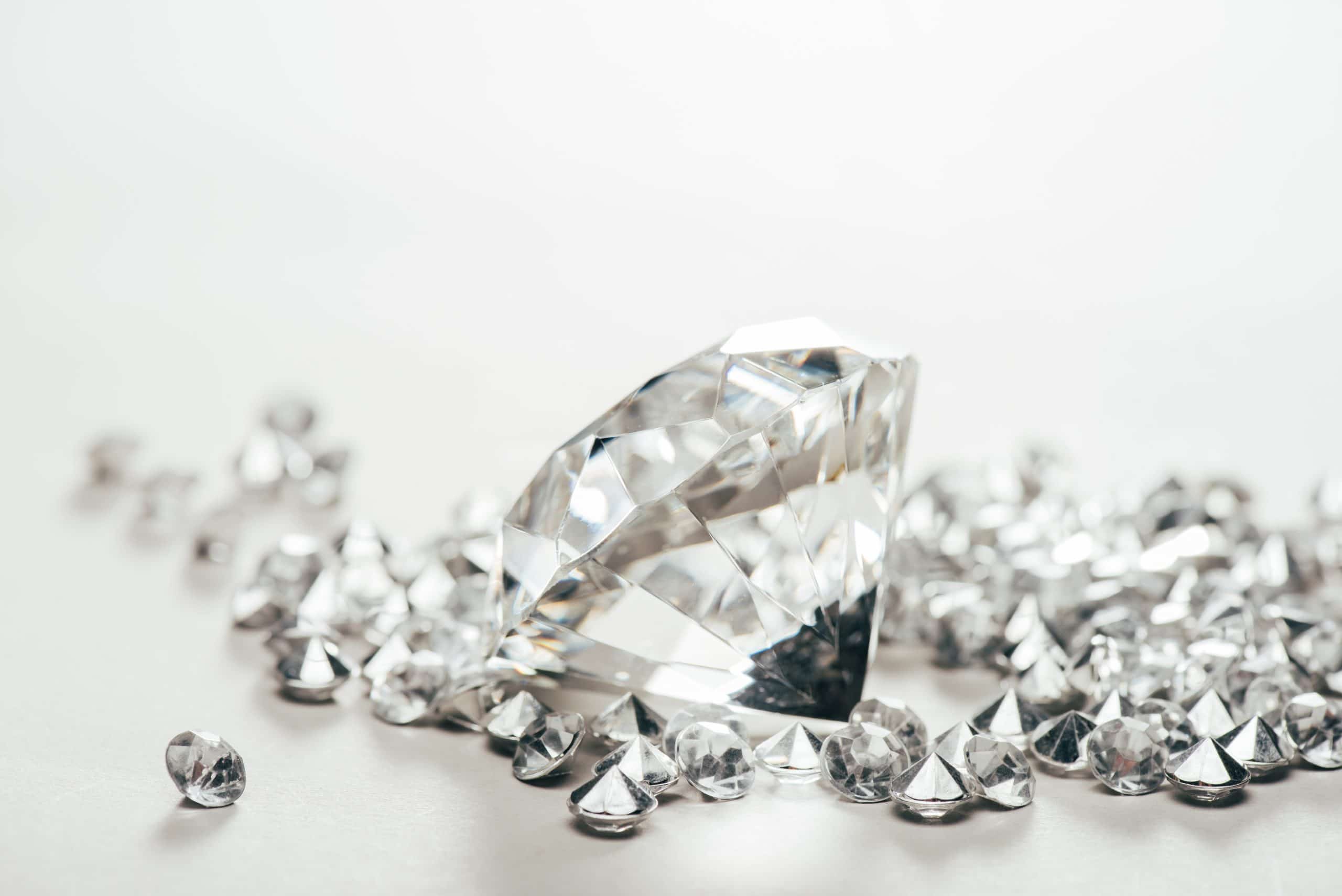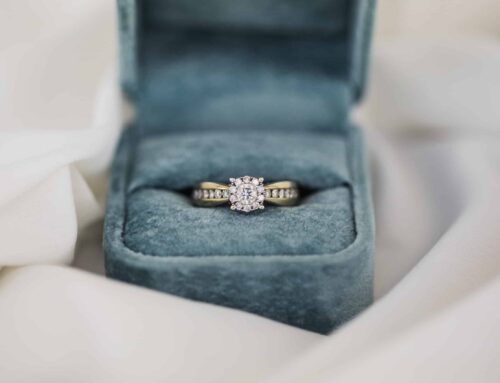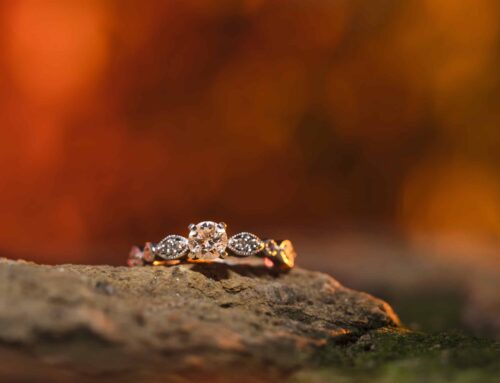Just like we check for Blue Book value before we buy a car, the 4Cs are a way to compare diamond quality and value. That grade is made up of four factors: carat weight, clarity, color, and cut. Each “C” has its own grading scale for evaluating quality.
When it comes to diamonds, shape refers to the outline of the stone — round, oval, princess, etc. A diamond’s cut, on the other hand, refers to the arrangement of a stone’s facets. This means a diamond’s shapes can be faceted, or cut, in many ways.
Combined, the 4Cs help diamond sellers set prices and compare diamonds, whether you’re shopping for diamond earrings, the perfect tennis bracelet, or your unique engagement ring. The more you understand about diamonds, the savvier you’ll be in choosing yours.
Carat
People often mistake carats as a measurement of size, but they actually measure weight (CTW = Carat Total Weight). As you shop, note that 100 points equal 1 carat.
To shave the cost of a diamond, start by looking at a diamond 10 or 15 points less than a diamond you like, because these tiny increases can really add up.
Clarity
A diamond is a thing of nature. Like any rock or mineral, diamonds can have flaws. Choosing a diamond with a difficult-to-detect inclusion or blemish can be a great way to save on cost without sacrificing beauty.
A flawless diamond with little to no imperfections is often desired due to its rarity, but they are also the most costly. But in fact, only about 2% of the world’s diamonds are actually flawless. Most are formed with slight imperfections—these are known as inclusions. Inclusions can appear as tiny white points, dark dots, cracks, or scratches. The fewer inclusions, the more valuable the stone.
The GIA Diamond Clarity Grade scale has five main categories of clarity characteristics with 11 grades in all. Most jewelry stores carry VVS as their highest grade. VS or SI are considered by most to be “fine quality” diamonds.
Types of Flaws
There are two types of flaws a diamond can have—external and internal. These flaws not only impact value and price, but can also indicate your diamond’s vulnerability—heavily included diamonds can be prone to breakage.
When looking at your diamond through a loupe, your Jewelry Consultant will see what is essentially your diamond’s fingerprint. These flaws may include:
External Flaws
- Natural: Unpolished surface; the original “skin” of rough diamond
- Cleavage or feather: Inclusion along atomic grain
- Pit: Small indentation on a flat surface
- Fracture: Irregular shaped break
- Cavity: An opening on the surface
- Nick: Minor surface chip
- Scratch: Small groove (can be due to wear and tear)
- Chip: Broken along external edge
- Laser Drill Hole: Clarity enhancements to remove or reduce the appearance of inclusions
Internal Flaws
- Included: Inclusions within diamond
- Carbon spot: Included crystal
- Grain/twinning: Irregularity in crystal
- Pinpoint: Small included crystal (appears white)
- Cloud: Group of pinpoints
- Internal grain line: Visible part of internal grain structure
- Bearded or feathered girdle: Minute to small hairline fracture extending from girdle into stone
Color
Diamonds come out of the earth in many different colors. The market has traditionally valued white diamonds higher than others, and the grading scale offers five groups of 23 letters to reflect that.
Cut
Cut refers to a stone’s shape, facet, and polish. Sometimes diamonds are cut so they’re heavier, thus fetching more value for their carat weight. Sometimes they’re cut to hide or minimize inclusions by expert diamond cutters skilled at bringing the brilliance out of each diamond they work with.
In general, there are three factors that determine a diamond’s cut quality:
- Proportion: The relative size and angle of each diamond facet
- Symmetry: The precision of the cut design, especially the facets
- Polish: The smoothness and luster of the diamond’s surface
Cut grades are referenced on a diamond’s certificate often using the GIA standards of Excellent, Very Good, Good, Fair, and Poor. The quality of a diamond’s cut always speaks for itself. The cuts can take shape in a number of ways to work with many types of jewelry and personal preferences:
About Us
Simply Majestic is your source for unique, fine jewelry. Owned and operated by Susette Tibus and Chuck Sneddon, Simply Majestic is located at 59 Williams Avenue in Mystic, CT. Whether searching for a traditional engagement ring; or a custom-design, our team will help with every jewelry need. Simply Majestic has a beautiful and extensive selection of wedding rings, bracelets, necklaces, diamonds, loose diamonds, gemstones, watches, earrings, charms and pendants.
From repair to re-design; from remount to restoration – or custom jewelry creations – enjoy the comfort of knowing utmost care of your treasures is top priority. Simply Majestic will clean your jewelry at no charge. Our repairs are legendary – from simple sizing to total restorations for antique and vintage jewelry. We set the standards others try to follow and while your jewelry is here to be serviced, why not get an up-to-date appraisal for your insurance company. You can be the designer – using your creativity with Simply Majestic’s Digital Design Studio – new technology meets old world craftsmanship. Design on our website or come to our store. We can’t wait to help you start your journey!





